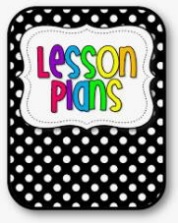Related Products
For Professionals
- Amplification
- Assessment of Student Skills, Challenges, Needs
- Early Childhood: Infants, Toddlers, Preschool
- Hearing Loss – Identification, Impact and Next Steps
- IDEA Law Summary Information
- Language and Speech Development Issues
- Legal Issues in Serving Children with Hearing Loss
- Listening (Auditory Skills) Development
- Planning to Meet Student Needs
- Self-Advocacy Skills for Students with Hearing Loss
- Self-Concept: How the Child with Hearing Loss Sees Himself
- Social Skills
- Speech Perception & Learning
Related Teacher Tools Takeout Items
September is Deaf Awareness Month

Videos
10 Things to Know about Deaf and Hard of Hearing People
2. Every deaf person has their own preferred methods of communication and language
3. Some deaf individuals may not identify as “Deaf”
4. Social situations and various environments may be different for deaf individuals
5. No two deaf people are alike
6. Deaf does NOT mean “dumb”
7. Deaf people don’t often consider deafness as a disability
8. Using hearing assistive technology is a personal choice
9. Deafness is often invisible
10. You don’t need to feel sorry for those who are deaf
Deaf Culture & History Lessons on Tap
The Navigating Life with Hearing Loss Curriculum from the Texas Sensory Support Network at Education Service Center Region 11, in collaboration with the Texas Education Agency, has 13 units including Deaf Culture and History
(page 188-199). The lessons have links to external videos and materials, differentiated learning targets, targeted vocabulary, and different teaching strategies.
Lesson 12.1 Past to Present
Lesson 12.2 Important People in the Deaf Community
Lesson 12.3 Support in the Deaf Community

Role Models

Role Models

Reach Out
Reach Out

References
Resource Materials and Technology Center for the Deaf/Hard [RMTC-D/HH]. (2021). High-leverage practices for students with disabilities. Tech Notes. https://www.rmtcdhh.org/tech-notes-archive
American Cochlear Implant Alliance
Texas School for the Deaf Statewide Outreach Center: https://www.texasdeafed.org/Page/797
DeafTEC: https://deaftec.org/stem-employment/deaf-and-hard-of-hearing-stem-professionals/
